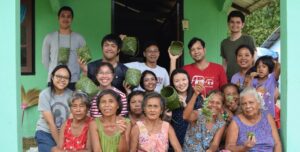A Preliminary Investigation of the Phonetic Characteristics of Moklen Tones
Moklen, an endangered Austronesian language in Southern Thailand, is important for studying tonogenesis. Previous research confirmed the presence of two lexical tones in Moklen, but their nature is unclear. This study analyzed the acoustic properties of Moklen tones. Eight native Moklen speakers participated, producing 93 mono- and disyllables with varied tones, onset voicing, vowel length, and coda classes. Acoustic measurements were obtained from the stressed final syllables, including f0, F1, F2, H1*-A3*, and CPP. Results showed that f0 is the primary phonetic cue for tonal contrast in Moklen, accompanied by the difference in vowel quality and phonation type. Specifically, Tone 1 is characterized by higher pitch and a lower and more front vowel with modal voice, while Tone 2 has a lower pitch and a higher, more back, and breathier vowel. These characteristics bear similarities to register distinctions observed in Austroasiatic languages of Southeast Asia, suggesting a possible transphonologization of laryngeal properties into prosodic ones in Moklen. However, the exact segmental sources of Moklen tones still remain an open question.


